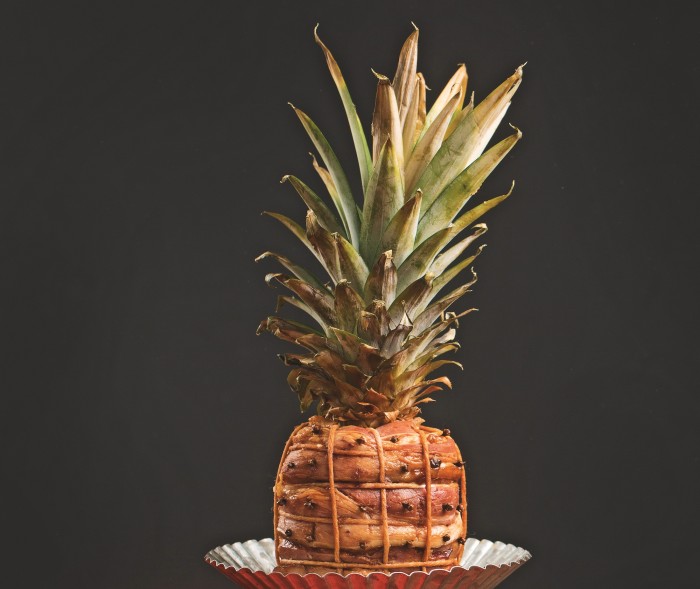Make A Swineapple, The Ultimate Pairing Of Pork And Pineapple
 Let's hear it for Butcher Babe, the Southern chef who treats meat like the belle of the ball. Fusing classic French technique with the bountiful larder of the American South (and a heavy-handed dose of rebellion), Loreal Gavin's cookbook is a pleasure to read and cook your way through. You've definitely never made a swineapple before, so get moving!
Let's hear it for Butcher Babe, the Southern chef who treats meat like the belle of the ball. Fusing classic French technique with the bountiful larder of the American South (and a heavy-handed dose of rebellion), Loreal Gavin's cookbook is a pleasure to read and cook your way through. You've definitely never made a swineapple before, so get moving!
I remember the first time I saw a pineapple growing in the wild. I was surprised by the fact that it grew close to the ground in a strange spikey bush in the middle of nowhere on Maui. I was farming for a month on the Hana side of the island and I fell in love with the island and the flavors that originated there. This showstopping dish embodies those feelings all over again every time I make it. This recipe takes a little bit of love. It's worth every drop of sweat though, I promise. Mahalo!

- 1 ripe pineapple
- 1/2 pound boudin or 1 country rib
- 1 1/2 pounds sliced bacon (about 21 slices of bacon cut platter-style)
- Butcher's twine
- 2 tablespoons whole cloves
- Preheat your oven to 350°F.
- After cleaning and carefully removing the skin and core of the pineapple, fill with the boudin and it’s time to wrap it in the bacon.
- There’s a ton of ways to do this, actually. I feel like the least stressful way is the best way. Even if it ends up looking less than perfect, let’s be real here, people—it’s a pineapple covered in bacon; it can’t taste bad!
- Bacon cut platter-style is neither thick nor thin; rather, it’s what most people consider just right. On a slicer at a butcher shop, it’s about ⅛-inch thick.
- On a large surface, lay out 2 feet of plastic wrap. Horizontally, lay out the butcher’s twine about 1 inch apart from the one above it so that it is the size of your pineapple. Lay more butcher’s twine now vertically, starting in the very middle of your twine checker board. It’s very important to keep the butcher’s twine straight for the sake of the swineapple’s presentation.
- Start to lay out the bacon slices, one barely overlapping the other, over the pieces of twine. Try to place the pieces of bacon so that the twine is right in the center of each piece. It took me a few tries to get the hang of this myself. It’s OK if it’s not perfect.
- Once your bacon is all set and ready to become one with the stuffed pineapple, place the fruit on its side in the very center of the mix. I use the plastic wrap to pull the bacon around the pineapple so that I can start to tie the twine and secure it. It’s butcher shop knowledge to also work from the center out when tying in most all cases. Don’t fret about the excess string for now — you can cut it later.
- After I have secured the horizontal pieces of twine, I’ll wrap a nice and tight string around the “equator” of the pineapple. Lastly, I start from the very center with tying the vertical ones and the worst part is almost behind you. Very gently, turn the swineapple over from its downward-facing side. The face of this portion is known as the presentation side and is the portion you will present to your guests.
- Now for the whole cloves. Place them in the center of the butcher’s twine hash marks. They taste delicious and are reminiscent of the little dimples of the whole pineapple. Use the long, skinny parts of the whole cloves to pierce the skin of the bacon so that it is secured. Throw away the plastic wrap.
- Place the raw swineapple in a high heat–safe dish and place it in the oven, presentation-side up. Let it roast for about 40 minutes or until its internal temperature reads 160°F. If it’s browning too quickly in your oven, cover it with foil throughout the cooking process to protect it.
- Let the swineapple rest on its side in the pan for up to 10 minutes and transfer it to a serving dish. Secure the top of the pineapple to the fruit with a wooden skewer and watch your creation disappear.
